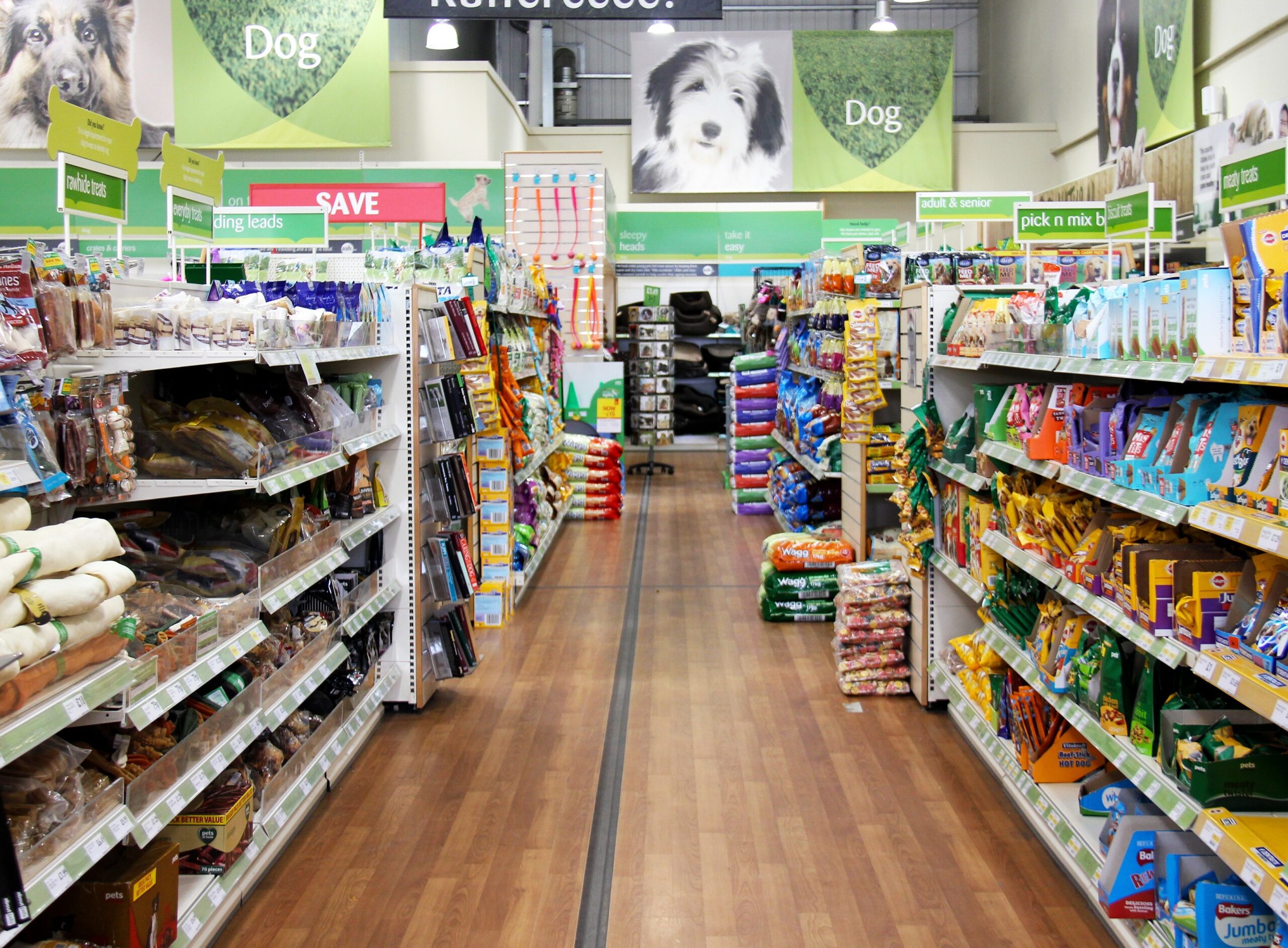Making Decisions: What Pet Brands Should You Carry in Your Store?
By Amy Castro//May 5, 2023//
Making Decisions: What Pet Brands Should You Carry in Your Store?
By: Amy Castro//May 5, 2023//
As a pet retailer, selecting the right brands to carry in your store is crucial to the success of your business. With so many options available, it can be overwhelming for even seasoned retailers. However, with the right strategy, you can make the right decisions that will benefit both your customers and your bottom line.
There are many things that should factor into the decisions about what brands to carry in business, no matter how big or small it is. To avoid overwhelm, I like to recommend people start with a specific set of criteria. Think of the criteria as a filter for what comes into the store and what stays out. To establish your buying criteria, you need to start with you! What is your store’s mission or values? What do you want to be known for? Then, consider who your customers are? What’s your customer avatar or avatars? What do they like? What’s popular and in-demand? What quality and price points make your customers happy?
Katy Portillo is the president and co-founder of Susie’s Snack Shop in Denton, Texas. She agrees making good decisions begins with defining who you want to be as a brand.
“For example, do you want to promote sustainability? Do you want to support fellow small businesses? We really strive to carry items and products that customers could just as easily go pick up at PetSmart and Petco. We also pride ourselves on working with fellow minority/women-owned businesses as that’s who we are. Once you find your niche, stick with it and promote the heck out of it. Customers really respond to brands and companies who stand for something and are willing to pay the extra dollars to support your store.”
Harmony Dale, general manager of The Big Bad Woof in Washington, D.C., recommends retailers consider their mission beyond being a retailer when establishing buying criteria.
“We believe in choosing products that meet our greater mission of supporting ethical, sustainable products, and small businesses,” she said, adding that they focus on locally and U.S. made products that contain ethically sourced, humanely raised ingredients, with recycled or sustainably sourced materials being a prime focus.
Traditionally, retailers found new products through distributor and brand reps and distributor open houses, and this is still a great strategy. A good rep can help you assess the suitability of products for your store based on quality, compatibility with existing brands and products, and price range. Distributor reps may also have access to brands that aren’t directly available from manufacturers or brand reps. Distributor open houses are opportunities to get first-hand exposure to new products from various brands, to compare products, and make informed decisions based on customer demand, margins, and product uniqueness. If you’re not getting what you need, or you need more, try reaching out directly to manufacturers for information on their products. Manufacturers can provide valuable information on factors such as pricing structures, minimum order requirements, and shipping policies. You can also ask for samples or demo materials for potential brands or products so you can personally evaluate them before making buying decisions.
If you’re a small, niche or newer independent retailer, finding new brands using some of these traditional channels can be a challenge.
“It isn’t like we have brand reps knocking at our door every day trying to sell us on the ‘next big thing’,” said Portillo, “We rely heavily on wholesale websites and attending expos and conferences to find cool new products to bring to our customers.” Portillo said she’s lucky to be in the Dallas/Fort Worth metroplex because it gives her access to the Dallas Market Center which allows her to attend markets and find new products first hand.
Since your customers are the only reason that you have a business in the first place, listening to your customers is another important strategy for brand selection.
“Customer recommendations are very important to us and are always considered,” said Dale. “Our mission is to offer products with a focus on sustainability. Many of our patrons are also interested in supporting sustainable initiatives and like that they can find these types of products here.”
Portillo also places a high value on customer input.
“Many times, we have brought new items in just because a few customers mentioned it would be nice to buy directly from us versus having to go to some big-box brand,” she said. “Literally all it takes is a few customers mentioning something they’d like to see in store and we try our hardest to find the best quality product at a fair/competitive price.”
Not only does carrying what customers want keep them coming back, but it can also convert them into brand ambassadors for your business when they directly refer others or provide referrals through customer reviews. With 80 percent of consumers making buying decisions based on friends’ social media posts and 88 percent of consumers trusting online reviews as much as personal recommendations, ambassadors can really help grow your business. Keep in mind though, your customers may need prompting to become ambassadors, so when you bring in a product at their request or recommendation, be sure ask them to not only tell their friends and colleagues, but to post on social media and write online reviews of your store and the products they love.
Customer recommendations can come with challenges though, as they’re about as individual as the customers themselves.
“We obviously aren’t going to bring in items/ products that aren’t going to sell,” said Portillo.
It’s not just about blindly following every customer request or recommendation. Retailers need to balance customer satisfaction with profitability and sustainability. When evaluating potential brands or products, they need to fit your existing criteria for quality, price, availability of inventory and potential profit margins.
Both big and small brands realize the power of social media to reach their target audience and influence consumer buying decisions and you can use the work they’ve put in to your advantage. Therefore, staying up-to-date on social media posts and influencer endorsements should be a part of your research especially if your customer avatars include Millennials or younger as they’re most likely to buy products recommended by an Influencer on social media. Also, social media is a key part of your own marketing strategy, so you’ll have the opportunity to “piggyback” on big brand and influencer marketing by sharing, commenting and including information from brands and Influencers in your posts.
And since you’re already online, go ahead and visit brand websites, vendor websites and customer review forums. These sources can give you insights into brand facts, reputation, product quality and customer satisfaction. Read reviews from other retailers, not just customers, and do some market research on industry trends and customer preferences.
“We research via the internet and often sample a new product with customers to get their feedback before bringing an order in,” said Dale.
You can also use online research time to investigate the brand’s marketing strategies. Understanding how a potential partner markets themselves will let you know what type of product messaging consumers are familiar with and can help you mirror those messages to attract more customers.
While you’re researching brands, be sure to look for emerging brands or those specializing in niche products that align with your brand. While established brands may have a larger following and greater marketing power, working with newer companies or those offering unique products can help differentiate your store from competitors. Additionally, these partnerships often provide opportunities for building symbiotic relationships by providing these smaller players with exposure while also expanding your offerings beyond what big-name competitors are stocking on their shelves.
Finally, attending events like Global Pet Expo and Super Zoo are something both Dale and Portillo recommend as part of every retailer’s strategy. Global Pet Expo 2023 was Portillo’s first event and it’s where we met. When you plan your visit well, these big events can allow you to identify current and upcoming industry trends, meet key players, and identify new ones so you can make informed buying decisions that will benefit both your customers and your bottom line.
Amy Castro is a business and leadership expert who speaks, trains and consults with pet businesses that want to build best-in-show teams that deliver a Five-Star Customer Experience. She’s also the host of the Starlight Pet Talk podcast, where she interviews pet industry experts and others to give advice and information for pet parents to help their pets live long, happy lives.



















